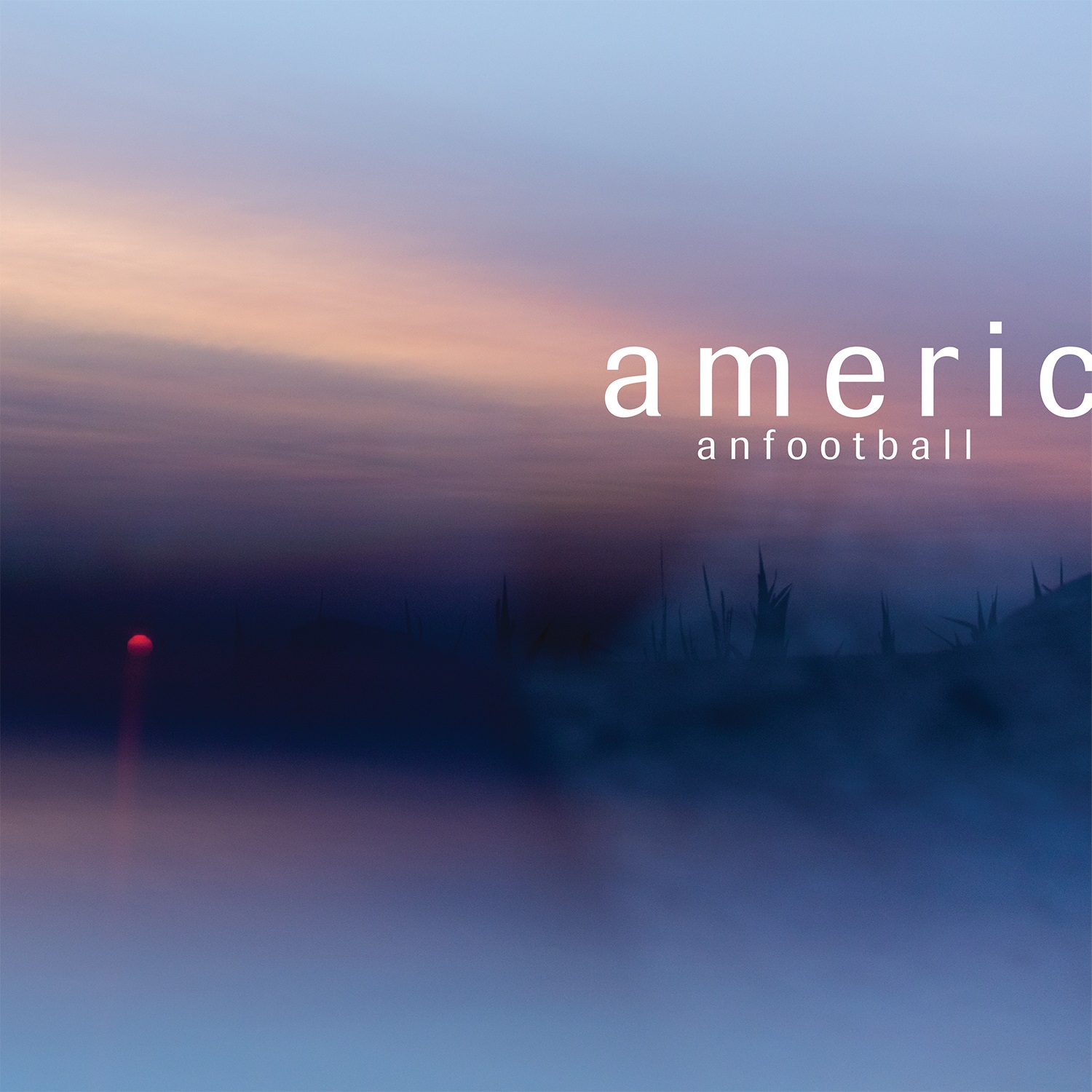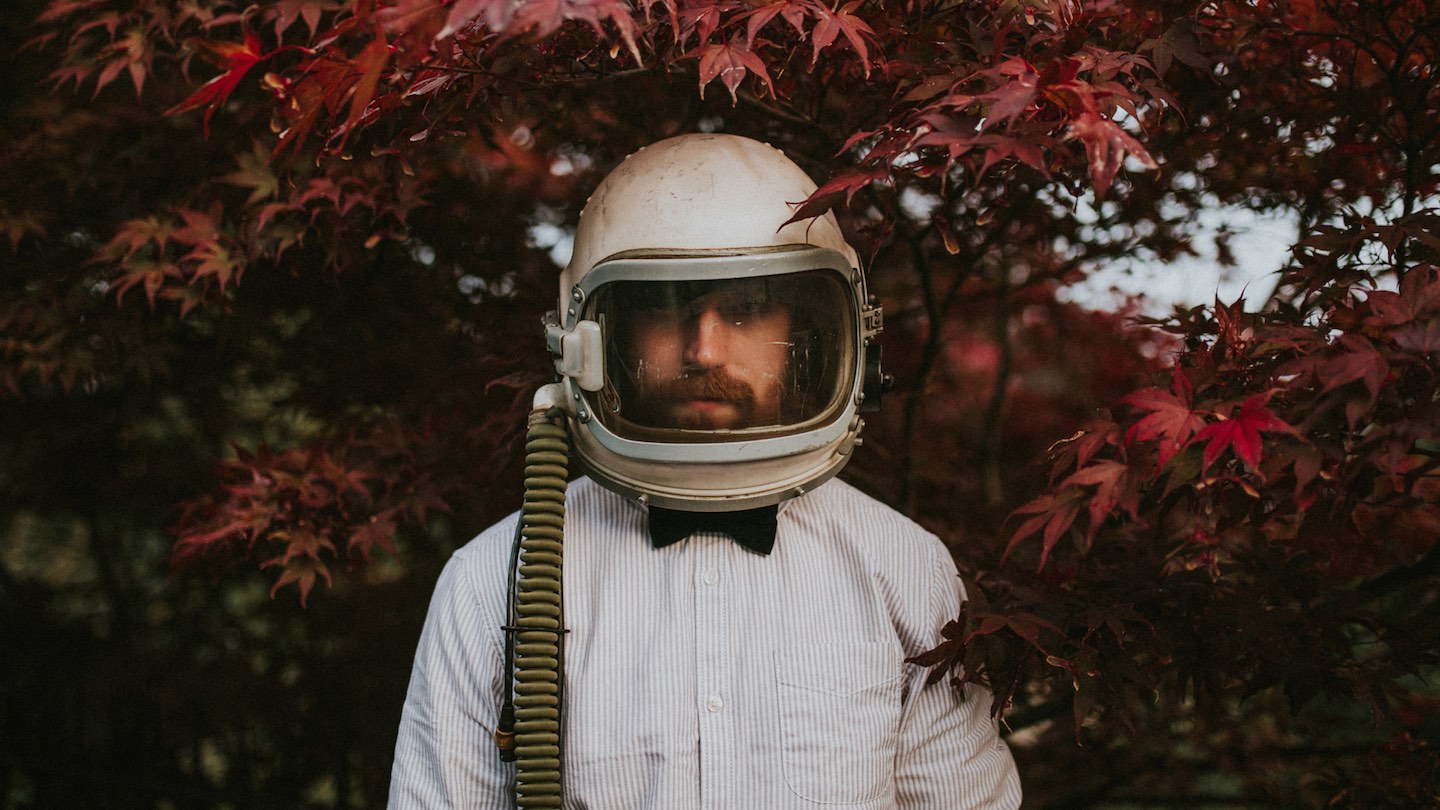Young the Giant’s Sameer Gadhia dives into their epic and intimate fifth album ‘American Bollywood,’ an ambitious, expansive, and resounding triumph that unpacks themes of identity, belonging, home, and the multi-generational saga of the immigrant in America through some of the best music of the band’s career.
Stream: “The Walk Home” – Young the Giant
There’s just this continual search for belonging. That’s what we want to provide for people who listen to us: This is our refuge. This is a place that you can be yourself and you can be at home.
Epic doesn’t even begin to describe American Bollywood.
Seismic in scope and intimate in nature, Young the Giant’s fifth studio album is a massive artistic statement; it’s the band’s most ambitious and sprawling project of their career, and to their credit, it’s also their most intentional and substantial record yet: A musical thesis so vast, they decided to break its sixteen tracks up into four acts, like a movie or a screenplay.
“At its face, it’s the multi-generational saga of the immigrant in America,” frontman Sameer Gadhia explains.

A first generation Indian-American himself, Gadhia has been exploring identity, home, and belonging through Young the Giant’s music for several years now alongside band mates Jacob Tilley, Eric Cannata, Payam Doostzadeh, and Francois Comtois. We can hear the inklings of these introspections and inner reckonings in the band’s earliest work – their global smash “Cough Syrup,” from 2010’s self-titled debut Young the Giant, can itself be interpreted as yearning for a proper place to call home. These themes have slowly crept their way to the surface over the years, coming to bear on the band’s third album Home of the Strange (2016), and once again on their fourth album, 2018’s Mirror Master.
In conversations with Atwood Magazine around both of those records, Gadhia described Home of the Strange as “an external search for your place in the world and your place in the narrative of America,” and Mirror Master as “an internal reflection of self, and where you fit in with your own versions and your own ideas of who you are, especially in what America is now.”
“We still look back at Home of the Strange as the beginning moment of when I felt emboldened to tell this story,” Gadhia reflects today. “I took it from a zoomed out place, and I took it from a place of fiction… Now with this [new] record, I felt emboldened to root it in my actual experience in my life… American Bollywood is the unifier of those ideas into a place of spiritual understanding of where we are in the world, but then also rooting that into culture and a truly personal experience, and a telling of my family’s story, and my relationship with my parents, and generational trauma. In some ways it encapsulates all of where we’ve been at this point and is kind of the crowning piece, I think, for what has been our career up until this point.”
With that said, he’s quick to add that “this is not just the story of an Indian-American caught in between two worlds; it’s also our universal search to find meaning in chaos.”
He was strong just for his mother
Barely turned thirteen
When life made a man of him
His father took the train to Bombay
Just to make a living
On the tracks, he said to him:
“I’m not a perfect man; I’d never claim to be
This life’s so hard living, but loving you is so easy”
American Bollywood…
– “American Bollywood,” Young the Giant
“My personal chaos is finding where do we fit in the chaos of the world, and the multitude of things and the vastness of the universe,” Gadhia shares. “For me, being a first generation American, it’s that sense of belonging and that sense of home and identity is not there. There’s a paradox of culture, and trying to find a place that fits in between those worlds is what I’m searching for. I think the end of it is that this… it is me; it is with me all all along. I have to create that place and it doesn’t physically exist, but I have to be okay with myself. And so then there’s a mental health issue to this as well, of being okay with yourself and understanding that you are your identity. You have the ability to find your own belonging, and so it’s a mantra because it’s a daily struggle, especially in telling this story.”
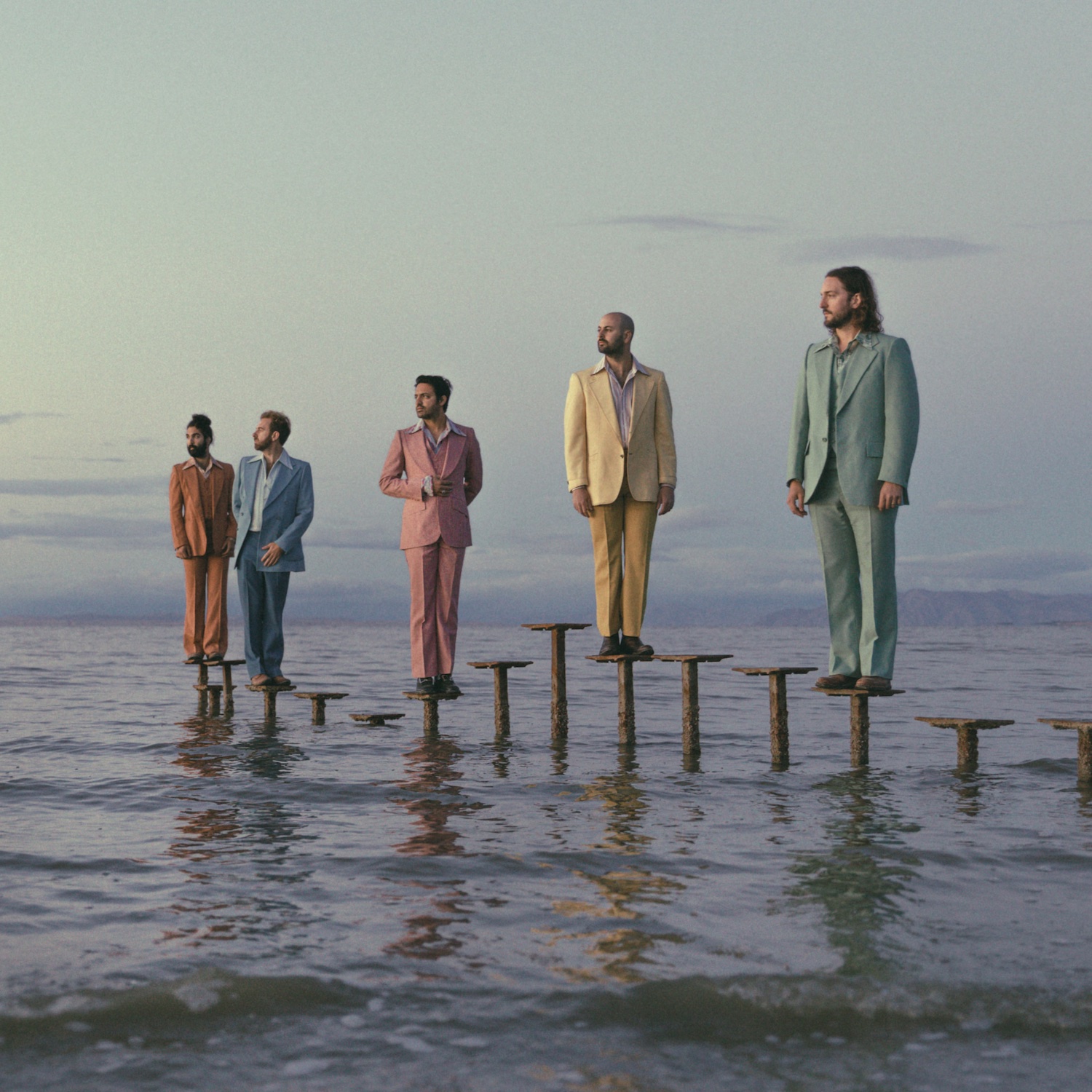
Identity, belonging, home, finding meaning in chaos.
On the surface, these themes feel dense and overwhelming, but American Bollywood breaks everything down into digestible songs that tell a loose story of the wayward individual finding his place in the world. The album itself is broken into four acts – Origins, Exile, Battle, and Denouement – the flow of which is loosely based off the narrative of the Mahabharata, an ancient Indian epic that has been popularly described as the longest poem ever written.
“It has so many layers,” Gadhia says at one point, seemingly humbled by his own creation.
American Bollywood is also a musical beast, with Young the Giant seeking to expand the bounds of alternative rock through the incorporation of more South Asian influences and instruments on their recordings than ever before. Instruments like the sitar, tabla, harmonium, tanpura, are present throughout the album; some instances obvious and overt, whilst others are more subtle. “We were trying to do that intentionally and show how it kind of seeps into what we know Western music is, Gadhia explains. In a way, the music undergoes a form of cultural assimilation, mirroring the journey of self-discovery and understand we experience through the lyrics.
This could be the ending of us
It could be the falling sun
Could have been a classic
Fatally attractive, suicidal, kind of love
I was just a kid from nowhere
Never knew where I belong
You were in the family, house up in the country
Blue blooded American
I’m leaving before the sunrise
No need to say our goodbyes
I will be on my way
Baby, I hope you understand
Always seem to want what I can’t have
Then I hit the road when it gets bad
Baby, I will be on my way
And of course, something must be said of the songs and the songwriting – for at its core, American Bollywood is truly a collection of hits in the making.
From the fiery beats and smoldering guitar work of lead single (and Atwood Magazine Editor’s Pick) “Wake Up” – a fever dream that speaks to the longing deep inside us all – to the enchanting, beautiful, harmony rich textures of “Commotion” and “My Way,” the searing, feverish churn of “Dollar $tore” and “Otherside,” and the achingly intimate warmth and heartfelt wonder of “The Walk Home,” American Bollywood adds several catchy and cathartic “classics” to Young the Giant’s catalog.
“The melody and everything just kind of flows like water,” Gadhia says of “The Walk Home.” “We are really proud of this song.”
Is anyone out there listening?
I’ve lost myself
Deep in the algorithm of someone else
And under new conditions
I might find that I was always perfectly alone
Can somebody walk me home?
To pearly gates the universe becomes a wave
And crashes down, forever’s not enough
And under new conditions, you are not alone
Can somebody walk me home?
Can somebody walk me home?
A sixteen song, hour-long experience, American Bollywood is, without a doubt, a resounding triumph and beautiful achievement for Young the Giant.
Their first album as an independent entity shows the tenacity and staying power of this band that has, over the past decade, established themselves as both a mainstay of and a trailblazing voice within today’s alternative rock canon. Young the Giant are subtly, openly redefining what rock music can sound like and what rock music can look like – all while embarking on that “universal search to find meaning in chaos” that has not only defined their career, but also been a tenet of rock since the genre’s earliest forebears picked up the very first guitars.
“There’s just this continual search for belonging,” Gadhia says of his band’s oeuvre. “I don’t think I quite fully understood the scope of that until this record. That’s what we want to provide for people who listen to us; this is our refuge. This is a place that you can be yourself and you can be at home.“
“I feel like I’ve been going through an existential crisis for just my whole life, but I feel like it’s just gotten that much more acute, and this record is, for me, also just a reminder of where I’ve been,” he adds. “All the epiphanies that I’ve had, even if I forget them sometimes.”
All four Acts of Young the Giant’s American Bollywood are available now via the band’s own Jungle Youth Records / AWAL Recordings. Dive into the album via our unapologetically in-depth interview below, and stream this epic behemoth of a rock record wherever you get your music.
Young the Giant are set to play Tucson’s Dusk Music Festival on November 11 and San Diego’s Wonderfront Festival on November 18. Tickets are on sale now for their homecoming show at Inglewood, California’s YouTube Theatre on November 12!
— —
:: stream/purchase Young the Giant here ::
Stream: ‘American Bollywood’ – Young the Giant
A CONVERSATION WITH YOUNG THE GIANT
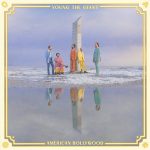
Atwood Magazine: Sameer, it's so good to reconnect with you! I love that we've been able to speak around each of Young the Giant’s past three records, and I know there's a lot to talk about here. So first and foremost, congratulations on American Bollywood’s upcoming release. It's a bit of an open-ended way to start, but do you mind sharing the story behind this record?
Sameer Gadhia: Thank you! Yeah, so it’s a record that we’ve decided to tell in four acts. It’s loosely based off of the narrative of an ancient Indian mythology called the Mahabharata – Origins, Exile, Battle, and Denouement. And it functions on a lot of different levels. It’s one of those things that I’ve been obsessed with for a long time. As a band, we’d written a whole other record, and then a great concept of ‘American Bollywood’ just kind of came to me. I had a demo, and I brought it to the guys, and I’m like, “Listen, I need to tell the story ’cause it just keeps on popping up everywhere and I need to do this.” And they really rallied behind it, so we kind of started from scratch again and wrote a bunch of other songs.
It’s been a long process, but through that have learned a lot. At its face, it is the multi-generational saga of the immigrant in America, but we are a land of immigrants obviously, and it’s the stories we’re hearing of the stories that got us here, the multiple generations that got us to this point in this generation. That’s the origin, and the exile is about the first of our ancestors really to leave and find another place to call home. And for me the battle is like, if it we’re talking about a multi-generational story, we are in battle right now: My generation of not only Indian Americans, but also immigrants and first generation Americans are fighting for a seat at the table, fighting to tell this narrative and fighting for identity and belonging.
And then the denouement is the takeaway, and the mythology of the takeaway is, we’re fighting. We’re at this moment where we feel like we’re fighting against something that is just objectively evil. But the takeaway about it is that everyone is imbued with goodness and cruelty, and we all have the ability to be cruel or amazing people to each other. And while there’s people who need to 100% be held accountable for things, I think the amounting banners of polarizing thought is just at an all time high. And so the denouement is maybe the takeaway: What is the next generation? What is the torch that they’re gonna carry and what are the takeaways that they’ll have? Maybe they’ll learn some of these good things from us, and that’s a hopeful idea.
So there’s this immigrant story.
There’s also this story, this mythology set around five brothers, who are heirs to the throne and are exiled over a rigged game of dice. And so in a lot of ways it also follows our career as a band where as five brothers, we created something and then we obviously had the major record label deal and we had success and we went on tour and maybe I started getting lost and figuring out who I was anymore. I think we spent over a decade just touring and running on that wheel of affirmation. And I think COVID was that exile – universally for everyone, I think, that exile from our lives to sit and think with this, about this person that we have become at this point.
And that was when I realized that I needed to tell the story and come back and fight this battle to assert control. It has so many layers… and then sonically we’re trying to chart the influence of South Asian and diasporic music on popular music. It’s happened over the decades, with The Beatles going to India and then Psychedelic Surf Rock and the sounds of Bollywood in the ‘60s and ‘70s mirroring what was happening here in America and South America as well. And Spaghetti Western… It’s just the sound of film and the sound of the influence of all these cultures on Western music. So it’s a lot of things! [laughter]
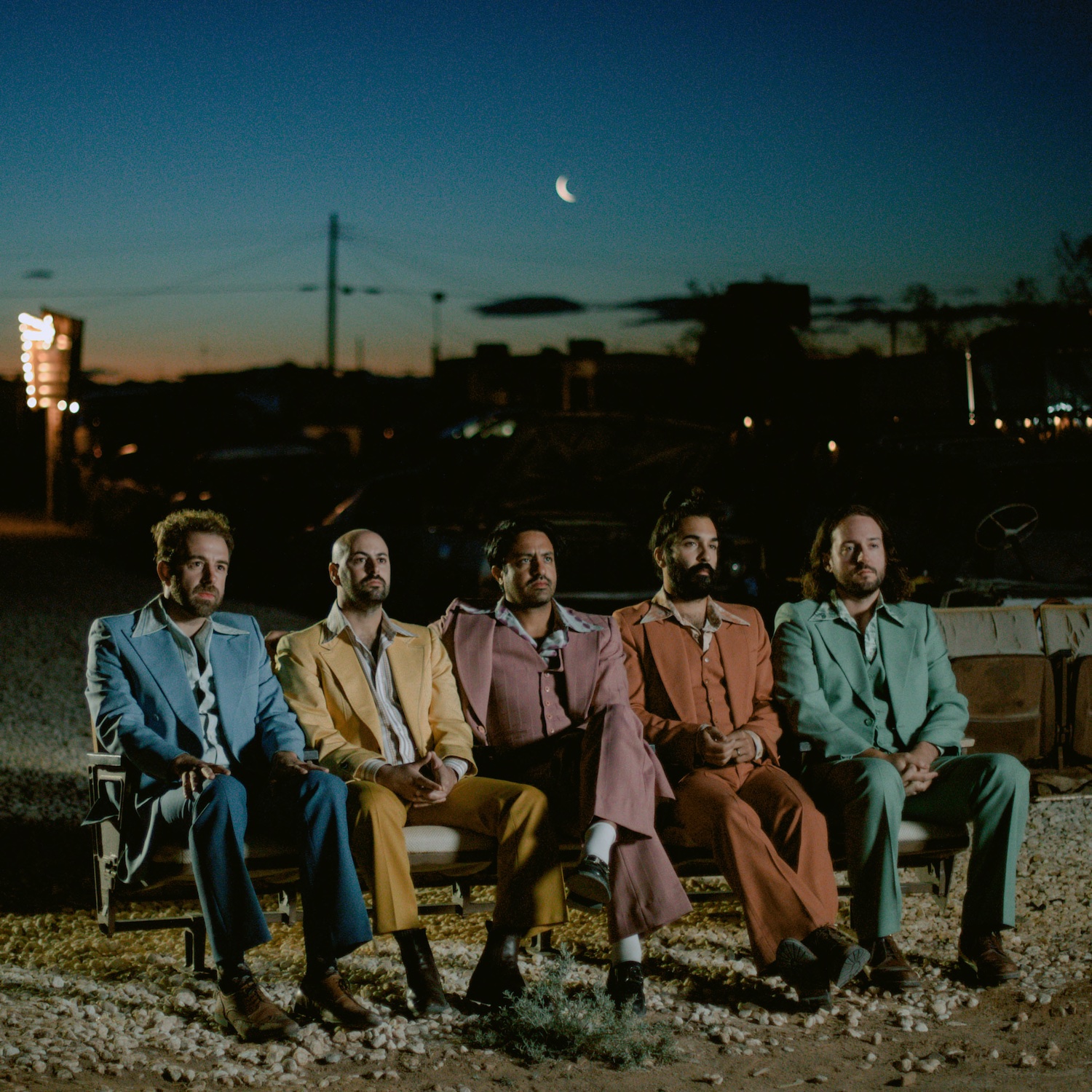
There's a lot to unpack here. You've also described this album as “our universal search to find meaning in chaos.” From politics to pandemic to climate crises and migrant camps, the past few years have seen a lot of “worldwide chaos.” What is your personal chaos?
Sameer Gadhia: My personal chaos, I think in some ways it’s a lot of everyone’s chaos, is finding where do we fit in the chaos of the world and the multitude of things and the vastness of the universe. Also for me being a first generation American, it’s that sense of belonging and that sense of home and identity is not there. There’s a paradox of culture and trying to find a place that fits in between those worlds is what I’m searching for. I think the end of it is that this… it is me; it is with me all all along. I have to create that place and it doesn’t physically exist, but I have to be okay with myself.
And so then there’s a mental health issue to this as well, of being okay with yourself and understanding that you are your identity. You have the ability to find your own belonging, and so it’s a mantra because it’s a daily struggle, especially in telling this story. Ironically, the story is that this is stuff that people don’t know about; that this is a new narrative. And I think in the beginning, initially, I think there’s gonna be an uphill battle because people want to know the stories that they know, they wanna be retold the same stories again. And this is a new story, this is a new narrative, and it’s an interesting time. It’s exciting to live it in real time now.
Identity has played a massive role in Young the Giant’s music for as long as I can remember. In our 2016 interview you told me, “Our story identifies with a lot of people out there, whether that’s the immigrant, or the American, or the disillusioned traveler trying to find a place to call home.” Do these words still resonate with you today?
Sameer Gadhia: Most definitely. I think we still look back at Home of the Strange as the beginning moment of when I felt emboldened to tell this story. I took it from a zoomed out place, and I took it from a place of fiction. We created this place, The Home of the Strange. Now with this record, I felt emboldened to root it in my actual experience in my life. I think it’s become something that was subconscious, and then became conscious around that time in 2016, and has only become more and more at the top of my mind.
But even if I look back on the first album, lyrically I’ve had an obsession with trying to find a home and trying to find identity from the very beginning. Even with “Cough Syrup” and there’s that song “In My Home” on the second record, which was actually written for the first record. There’s just this continual search for belonging. I don’t think I quite fully understood the scope of that until this record. That’s what we want to provide for people who listen to us; this is our refuge. This is a place that you can be yourself and you can be at home.
Life’s too short to even care at all,
I’m losing my mind losing my mind losing control.
These fishes in the sea they’re staring at me,
A wet world aches for a beat of a drum.
If I could find a way to see this straight I’d run away,
To some fortune that I should have found by now.
I’m waiting for this cough syrup to come down, come down.
I really do feel like you've been slowly telling different versions of the same story for at least the past three records now, which is so fascinating. Back in 2018 you told me, “Home of the Strange is more like an external search for your place in the world, and your place in the narrative of America. Mirror Master is more an internal reflection of self, and where you fit in with your own versions and your own ideas of who you are – especially in what America is now.” Where does American Bollywood fit in all of this?
Sameer Gadhia: Yeah. It’s funny because there was a moment in time where American Bollywood may not have been the album title, and I was toying with… This is another deep concept, unification theory. [chuckle] Because if the third record was an external search and like the big things, our identity, this cultural search on the scope of human understanding; and let’s say that’s like quantum theory, right? You’re like studying the tiny movements of particles; and then the fourth record is about the universe, and it’s about superposition. Super position is a quantum idea, but like relativity and just like where we sit in the world and where we sit with ourselves… I think American Bollywood is the unifier of those ideas into a place of spiritual understanding of where we are in the world, but then also rooting that into culture and a truly personal experience, and a telling of my family’s story and my relationship with my parents and generational trauma. In some ways it encapsulates all of where we’ve been at this point and is kind of the crowning piece, I think, for what has been our career up until this point.
I'm so happy to hear that. Is it not fair to also say that Young the Giant came into their thirties and had a little bit of an existential crisis?
Sameer Gadhia: Oh, yeah, 100%. And I also had a child, you know, that’s a huge thing, and now I have two kids! I think that that’s a massive, massive thing because when you have a child, first off, you have to believe in a future, right? Also, what is that future, and what do you pass on to your child? And my children are multiracial children; they will know parts of me, but they might not understand all my struggles. In the same way that I don’t understand my parents’ struggles or their parents don’t understand their parents struggles. Well what can I share with them? What can I impart here and pass on to them?
I feel like I’ve been going through an existential crisis for just my whole life, but I feel like it’s just gotten that much more acute, and this record is, for me, also just a reminder of where I’ve been… All the epiphanies that I’ve had, even if I forget them sometimes, that I at one point felt that.
I admire that when you have a child, you have to believe in a future; that's a very powerful statement. You need to believe in making the world a better place for them to live in.
Sameer Gadhia: Totally. It’s a valid philosophy and idea, and there’s so many people out there who have no hope in anything anymore, and I can’t… I have to. With my art, I’ve always instilled, or tried to instill hope, but it’s my main thing now. I don’t have time or energy to be nihilistic about things – even for maybe my own self-preservation, but I think that it’s at least a worthy cause of trying to build hope, and if that’s all I do, then that’s great.
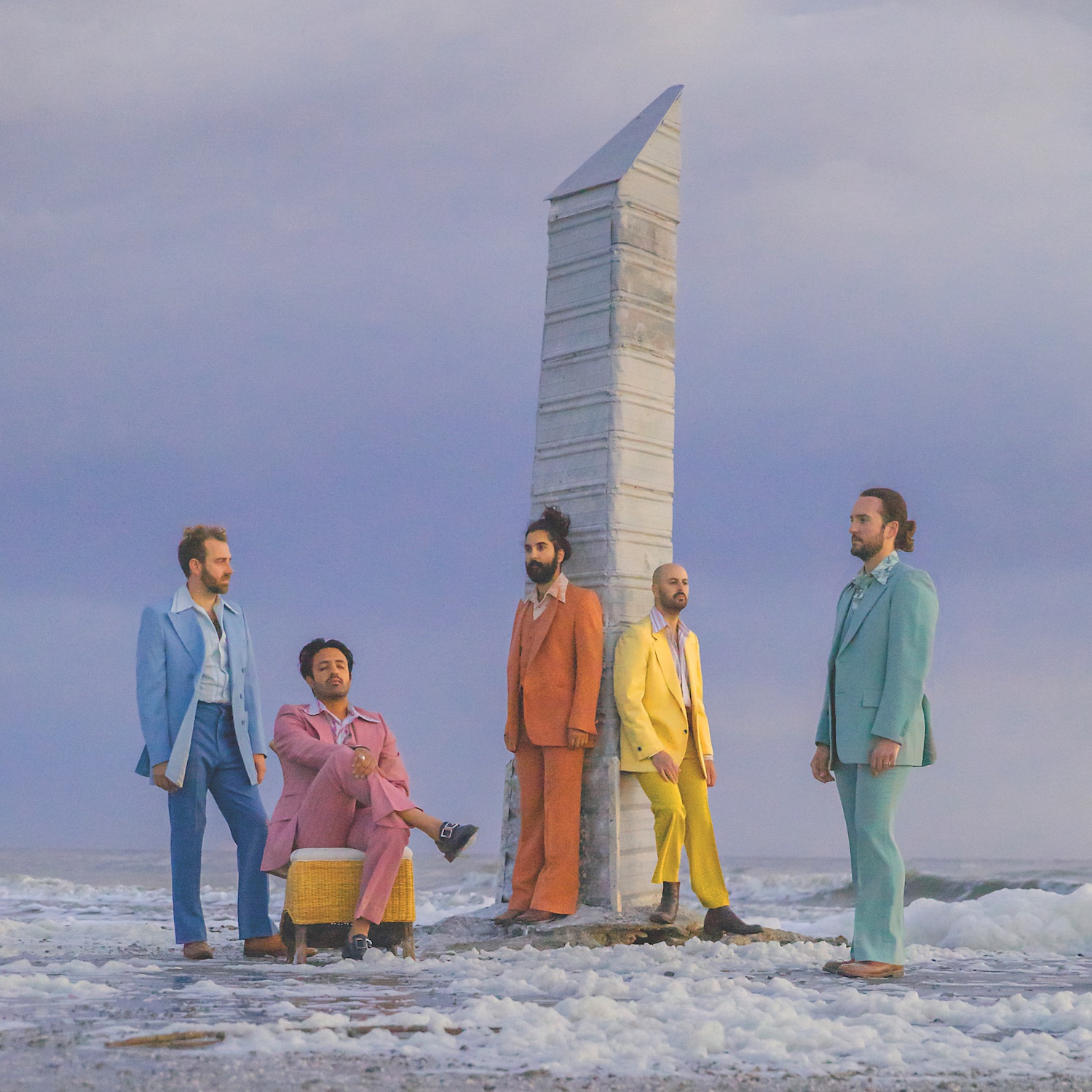
I wanted to talk about some of the sounds here; I'm familiar with the sounds of the sitar and I believe I heard some tabla on this record. How did you go about incorporating Indian instruments across the album, and is this something you hope to make a part of Young the Giant’s core identity moving forward?
Sameer Gadhia: So, one of the big tenets when we were making this record and what I really loved about making this record was that, we kind of built this memory palace that was American Bollywood, and well, what are these, what does that place look like? What does it sound like? And one of the things that we’ve said was that I think mystical punk was a way that we thought about things was that we’re incorporating these instruments that have been there, that my family has played, that have had but an element of it is this punk attitude of do it yourself there’s no classical training there it’s just instinct and pure emotion and so there are elements of here, we brought auxiliary players, recorded it for the actual tabla, ’cause, at the end of the day, you have to know how to play tabla a little bit. It’s a very technical instrument.
But when it came to harmonium, tanpura, even some dull stuff, which is a Punjabi drum, there was like a lot of intention behind, okay, let’s embrace the fact that I’m not fully Indian, I’m not fully American, let’s just… Let’s create this middle ground space where we’re just trying to play these instruments, like the first thing that we would think of, and so that was kind of where we incorporated that and I became really fascinated with a lot of Indian instrument, a lot of instrument Indian percussion is very swung and so everything’s really in the triplet and there’s something that lend itself to the modern hiphop movement right now, or just in general everyone loves triplets and there’s a four on the floor beep it’s like, and there’s like, that’s always there. And we’ve always loved backbeat and groove as a band and, to incorporate the triplet into our instrumentation was something that we really wanted to do and for these shows we’ve had an auxiliary player and string players, help facilitate this and it’s obviously, he’s classically trained.
They’re classically trained but it’s been really great having them. I think we’ll have to see; I don’t wanna just pigeonhole us and say that we’re just gonna be doing this for the rest of what we do, because what Young the Giant is, is that we move and shift and evolve, and we’ll see where that goes. A lot of the instrumentation, especially in the first act, it’s almost intentional where we’re talking about the history of Indian influence in music.
In the first act, it’s very prevalent: You can really hear the instrumentation. And then I think as the acts go on, with the exception of a few outliers, the influence there is more subtle, it’s more nuanced and stuff, and I think we were trying to do that intentionally and show how it kind of seeps into what we know Western music is, because there has been a melding that happened a while ago, so that you can almost barely tell, is this supposed to sound Indian? This sounds like what maybe Young the Giant has done before, but that the influences were there, and are there, and are now just below the surface… That’s just the most exciting thing, the discovery of these instruments and the discovery of the sounds is what keeps us going.
Kudos to you all for doing that! It sounds like you had some professional players, but that it was mostly you guys bringing these instruments into the studio and just banging away, seeing what sounds good.
Sameer Gadhia: Yeah, totally! Let me take the harmonium and like… I’d play the harmonium, I’d play like piano, and I know how to play piano a little bit, but there’s a whole different thing with harmonium, mostly playing with one hand because you’re pumping the organ with your left hand. So there was like… There was that and then like we… But we had also this woman named Mina, she… Mark you johnny, she’s… She did like a lot of the tableau work. And then she’s also a classically trained dancer, like a Bharatanatyam dancer. And dancers have these bells on their ankles called ghungroos. And for “Tomorrow” we just recorded her dancing and we just like have the bells of her dancing to the song. So there were all these like, little elements, but yeah, it, like, for the most part it was like, especially from the beginning, it was like also like creating our own sample library. You know, I went to India a few years back. Some of the samples are just voice memos from me being there.
I didn't even know that! That's really special. I remember the documentary, that was really powerful. Was that the precursor to American Bollywood becoming what it was?
Sameer Gadhia: You know, it was an interesting time. I think I hadn’t fully awakened yet, I think to what my narrative needs to be. And I think that was early in our career. So it was 2014 and in some ways, like there are things I would’ve done differently, but it’s a snapshot of time, you know, it’s like, it wasn’t what maybe I wanted to truly just impart about India, but like, I’d almost like love to do that again. Just like go back again and that’s the intent. We’re gonna go back and tour there again. But it had started slowly to happen at that point. I think it was like that was one of the many factors that led into it. Because it, you know, one thing I remember strikingly was that, I’d, I’ve spent a lot of my childhood in India and going there on vacations in summer spending the whole summer there.
And like, I have a very specific experience there that it’s like rooted in like this local culture. And then, I went to play this festival and a few days before I went to go see my family and we had like the normal time and then I went to Mumbai to meet the rest of the band. And the second I met the rest of the band, I realized like we could be anywhere in the world. Like it, people treat us the same and they protect us in this bubble. You know, like you stay at this hotel, you get, you take a sprinter van to the festival. The festival looks like it could be in just about any other festival. It’s very international people from all over the place. And you perform the show and you go back to the hotel and it’s like, in some ways it’s like you’re so cloistered and you could live your whole life like that.
And I think a lot about, even just like, at that point I was thinking about Siddhartha and I dunno if you’ve read Siddhartha by Hermann Hesse but it’s obviously the story of Buddha and like, you know Siddhartha was this Prince who like lived in this like beautiful kingdom and like castle and was surrounded by beautiful things and his family protected him from anything else that was happening. One day he decided to leave and he just never came back. And I think I understood that more than ever, especially in a place that felt for me culturally so different than like, just about anywhere else to like have it feel so similar to what I’ve been doing with my career was kind of an awakening.
The fact that as a band, you can go to every town, stay in a hotel, go to the gig, come home, and suddenly New York looks like Tallahassee, looks like the middle of America, and so on. I'm sure that's a really hard chain to break. It's a very easy pattern to get into – the Simon & Garfunkel, “each town looks the same to me” effect.
Sameer Gadhia: Exactly. You have to actively push yourself out of that comfort zone.
So, you really set the tone with this album's opener in title track. Is “American Bollywood” the song based on a true story?
Sameer Gadhia: Yeah, it’s based off of like my grandparents and then my parents. And the, I mean, the main character is my father in the story and his father going off to find work and then him and my mom traveling to Michigan and the first time he ever saw snow and my mom got sick. And so that is their story.
And then we wake up.
Sameer Gadhia: Yes, exactly.
He was strong just for his lover
Already twenty four
By the time he first saw snow
American Dreams were hard to conjure
Without a bed to sleep in
When she was sick he said to her:
“I’m not a perfect man; I’d never claim to be
This life’s so hard living, but loving you is so easy”
American Bollywood…
You mentioned that part of the inspiration between the behind the four acts was from the Mahabharata. Was another part of this decision based on the sheer fact that you're trying to turn 16 songs into a more bite-sized and understandable collection? It's a long collection!
Sameer Gadhia: Yeah, it’s our longest record. And that was a consideration. I think we’ve always been an album band and like… But we wanted people to be able to truly live with each movement of this record. And like this mythology I would read a lot in comic books, and that’s the way I kind of read it. And the style of the comic book is very like, old kind of pop art style, and it’s this perfect blend of East and West. And so I loved the serialization of this story where you could read one thing and then you read the next one.
I was really obsessed with that idea, and that was the point from the beginning. To have people live with these movements, I think has been really exciting – I think time will only tell once the whole thing’s out, and maybe in a year or two from now where we’ll see if that worked, but it was exciting for us.
“I believe there is truth in everything, just trying to find my way back from tomorrow,” you sing in “Tomorrow.” What does that mean for you – trying to find your way back home from tomorrow?
Sameer Gadhia: I think it’s just trying to find my way back from speculation from the past and trying to be very present in this exact moment and believe in this moment and the empowerment of all things and this presence of mind I think there was this desire, especially with Origins to bring out these crux big pillars of like eastern philosophy into the storytelling, which… And then if you hear it, it’s the psychedelic move movement of rock music is all taking from this place this kinda transcendental place and so that’s where just trying to live in the present.
Staying on Act One for one more question, “Guardian Angel” is a very special song. You sing about being ready to meet your maker here; can you share more about where that mentality came from?
Sameer Gadhia: Yeah, it was actually a song that I had written for the fourth album, and so it was a… But it just didn’t quite fit there, I think it was this inevitability of an appending moment of kind of allowing yourself to look over the precipice and kind of fall in and yeah, it was just like, it felt so perfect in ‘American Bollywood’ I mean, just obviously sonically, but in terms of the storytelling it’s the last movement of the Origins Act and where Origins before this has been very hopeful and very naive and young, it’s like now we’re going into the unknown.
We’re about to go into the exile, and it felt this perfect transitionary piece – and sometimes with lyrics, they go from places of pure conscious intention to just kind of what first comes outta my mouth when I’m writing the song, and I think for this record it’s a combination of both.
I’ll be honest, I have no idea how any of these songs have been received by anybody but myself. One of my personal favorite songs on this record, and possibly of your entire band's collection over the past ten-plus years, is “The Walk Home.” Never have I known a chorus and pre-chorus to flow so perfectly into one another; you just get right. And the way it opens – “Is anyone out there listening? I've lost myself deep in the algorithm of someone else…” Do you mind sharing more about this track?
Sameer Gadhia: We are really proud of this song. I think it came at the very tail end of this record. Now it’s started to raise its head – it’s funny when you write things, you’re so in it, you don’t really know how things are going to be received. We didn’t even show anyone – we don’t show people mostly anything, not even our management. So they were like, “Oh, this will be the song,” wherever, but we just didn’t know; we never really think about that stuff. When we showed them that song, everyone’s like, “Whoa, this is a great song,” and there was never any intention that it would be a single.
I think that’s when the best songs come for us, is when we’re not really thinking about, “Oh, is this gonna be a song,” “a big song” or whatever. It was this kind of flow state, the song just came immediately and I remember I had it all in my head and Eric and I, and Fran did to a certain extent. I remember we were working with John Hill, our producer, and he was like, I don’t know about this song, and so I had to convince him like five, six times that it’s gonna be great, we just have to do this and this. It was one of those things where everything fell perfectly into place, and I think the melody and everything just kind of flows like water and we’re really proud of that one.
“Otherside” and “Dollar $tore” are two more favorites on this album – I clearly have a thing for uptempo rock songs – in addition to “Wake Up,” the album’s lead single. Seems to me like, regardless of whatever you guys experiment with, you still remain a rock band at your core.
Sameer Gadhia: Yeah, I think there’s something about that that we love. I mean, we take that as a badge of honor that we were a part of this time and era where that was what was happening, it was in the water culturally and I think we’ve been given the authority and the torch to move that narrative forward. Particularly with this record, I think we wanted to move out of the classification of just being an “alternative rock band,” but at the same time owning the genre in some way, and saying to people, “This is what this genre can be.”
I’m still so like enthralled by it, and I love pop music and I love hip-hop. I love everything, anything that’s good. I like that it has an artistic intent, but a lot of the questions this time were like, “Okay, Drake is Drake and whatever pop star is whatever pop star. What makes us who we are?” I think that was the real goal here, and the thing I love about this genre is that it’s a bunch of kids and DIYers trying to think, figure things out. In a pop world, it’s professionals and a cabal of writers, and to proudly say that we wrote all these songs and that we helped produce all these songs, that’s the purest thing that we can do.
You say you want to be moved out of being classified as an alternative rock band while embracing (and possibly expanding) the genre all at once; if I may, what do you exactly consider yourselves?
Sameer Gadhia: I guess I don’t have an issue necessarily with the classification of alternative music. I think genre classification is flawed in itself, but… There’s this world that we came in at radio, like alternative radio, and I think we’re beyond that place now. But there’s also this, especially from this record, this understanding that we have no control over the way people think about us; that we just can continue to do what we do. And so I still don’t mind being called whatever, but when people ask me what type of music we are, it’s a very difficult thing to answer. [laughter]
“Happy” is one of Young the Giant's most transformative songs, and its neighbor “Commotion” is one of your most beautiful tracks. With those layered falsetto harmonies, it creates a blanket of warmth over the ears. In the story of this album, where do these songs and the rest of the album's final act end up?
Sameer Gadhia: Yeah, I think, “Happy” is this transitional piece… In the mythology it would almost be like some people would think the end of the battle act was the ending, right? You looked at… Oh, this is like the… Everyone lives happily ever after. After the protagonist win the battle. Good fight beats evil. But then there’s another whole segment to the the thing where these brothers come back and okay, they’ve won the war, they’re ruling the kingdom and they thought it was gonna be… There was not gonna be any evil anymore because they’re a part of it. But they realize that no, I mean, evil just takes different forms and we are also culprits of some corruption. And so I think “Happy” is this kind of disillusionment of this happy ending that where we reach to with “Dancing in the Rain” maybe of this joyous moment and “Happy” is like starting to question that veneer of like, just don’t go and ask me more about this. And that’s when kind of we open up into “Commotion” and all the others. “Commotion” was intentionally like, that was completely stream of consciousness lyrics and it just kind of feels like this commotion of emotions and feelings, you know?
“Dancing in the Rain” is this big celebration, euphoric, everyone's dancing like they'd never seen the rain. And then you have the very somber kind of disillusioned “Same Folk,” where we're all coming into the end and we're all made the same.
Sameer Gadhia: That’s kind of in some ways the takeaway of it all. And I hate that sometimes that term has been politicized as being passive of things. I’m not saying like, hey look, we should all just be friends. And whatever. But ’cause people need to be held accountable for things. But I think it’s still important thing to remember outside of just the politicization of everything. It’s like, it’s true. It’s like when all is said and done, we are just one and it’s… We are, that’s all. We all, we deserve each other [laughter] for better, or for worse.
What do you hope listeners takeaway from American Bollywood, and what have you taken away from creating it and now putting it out?
Sameer Gadhia: I think I want people to takeaway that… Yeah, just that they have a place to belong in this, that this is a story of us. It’s a story of all of us and not just my experience. My own takeaway of it is that, a constant thing of creating art without any expectation… That’s always a difficult thing to do, when you spend so many hours and years literally on a record and you want everyone to understand and respect what you’ve done, at the end of the day, none of that stuff makes you who you are and you can’t find validation from those things. And so, that’s kind of my takeaway – is that I have to… It’s a continuous thing, also to remind myself.
Sameer, congrats to you and the band on this record. I think you're right; this feels like Young the Giant's most fully realized statement to date. Thank you for your time and for bringing us with you on this journey.
— —
:: stream/purchase Young the Giant here ::
— — — —

Connect to Young the Giant on
TikTok, Facebook, Twitter, Instagram
Discover new music on Atwood Magazine
? © MK Sadler
:: Stream Young the Giant ::


